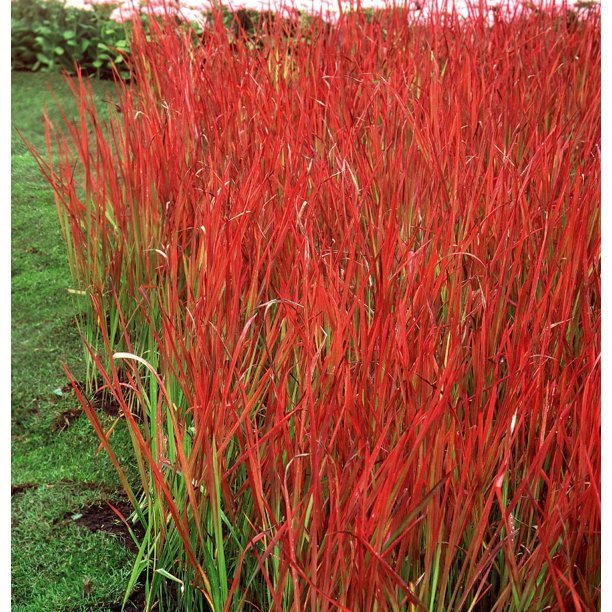-
Posts
6,192 -
Joined
-
Days Won
131
Content Type
Profiles
Forums
Events
Classifieds
Posts posted by lavender
-
-
3 hours ago, Bon said:
Effective October 8, 2021, the department added two other plants to the noxious weed list: garlic mustard, Alliaria petiolata, and Japanese stiltgrass, Microstegium vimineum. These plants are generally not sold in nurseries but are invasive and common in Pennsylvania. Landowners with these plants on their property are encouraged to remove them.
Getting rid of garlic mustard is next to impossible. I've tried. Excerpt from one of DTEGC's newsletters:
"Garlic mustard is not a weed that you want growing anywhere. It is harmful and has some very nasty habits. First it is extremely invasive. The first recorded sighting was in New York State in 1868. Whether the seeds were inadvertently carried into the country or it was introduced as an ornamental is unknown. Since then it has invaded 30 US states to the determent of native plants. It chokes out native plants due to its rapid spreading depriving the more delicate natives of light and nutrients. This is facilitated by the deer population preferring to feed on native plants. The areas in which the native plants grew are rapidly taken over by garlic mustard compounding the problem of regrowth of the natives. Often the seeds are carried in by the deer starting the process that results in large monocultures of garlic mustard carpeting the forest floor. What remains of the native plants after the deer have fed on them are quickly forced out by the rapid growth of the garlic mustard.
Garlic mustard reseeds readily. Each plant produces approximately 5000 seeds. The seeds are tough and it takes stratification to get them to germinate. They will live in the soil for 5 years or more and still grow into plants. The plants drop their seeds near the mother plant and this clustering of plants contributes to the monoculture that crowds out native plants that cannot compete. Garlic mustard will grow in sun or shade so no area is really safe from it. It does prefer moist soil although it can be found growing along roads. It is important to destroy the plant by burning or placing it in a plastic bag after it is pulled as a plant will still set and ripen seed after it is weeded out or mowed. Any roots left in the soil will regrow.
If this isn’t enough the plant produces a substance from its roots that inhibits the growth of other plants. Plants that do this like the black walnut trees are called alleopathic. Because this substance is present in the plant it cannot be composed or plowed into the soil. Any compost from a pile that has a significant amount of garlic mustard in it will inhibit the growth of ornamental or food plants when added to the soil. This substance also inhibits the growth of beneficial soil fungi that is needed by various plants for growth." -
Not only did my lilacs start to drop their leaves right after they flowered but the apple trees are dropping their leaves early. A large elderberry is almost totally leafless. While this could be some sort of fungus or bacterial disease my guess is it is stress. There are too many different varieties acting in exactly the same way for it to be a single disease. We have had very high temperatures with torrential rains. Excess heat slows photosynthesis. The trees are so stressed out that they can't support leaves. The apple trees are holding on to their fruit but the fruit is small. The trees are just shutting down to preserve the integrity of the main body. It's sort of like hibernation. Some woody plants are just less susceptible to climactic conditions or are growing in an area that protects them from excesses. My white lilacs are fine but they are very old, very large and are somewhat shaded by the house.
-
Removing Japanese barberry from your yard isn't going to remove the tick population from your yard. One of the prime culprits for harboring the tick is the white tailed mouse as well as other mammals that live in burrows. The white tailed mouse is one of the prime carriers for the bacteria that causes Lyme Disease. The ticks and their offspring feed on the mice in the winter. You and the deer are summer food. The ticks like shade so that is where they congregate. You are just as likely to find them hiding in tall grass, hedgerows or deep woods. I got my first tick picking leeks not pruning barberries.
I have no problem with the idea of removing barberries if they become invasive but I haven't seen it locally. It might happen but give that as a reason for removing them not some questionable study that counted ticks and counted barberries and decided there was a correlation. There are a million other factors out there that can affect tick populations. Did they count the mice and the deer that the ticks feed on? Fewer mice, fewer deer equals fewer ticks. Since the ticks only use the barberries for shade in the summer there isn't any reason that any other planting that produces shade won't work as an alternate. Are they going to remove their food source which would be more effective?
This is like the masks. Let's find a scapegoat and use that as the solution to a complex problem. If you can't run an experiment that has controls and can be repeated with the same results then don't call it "science."
-
Kudzu? What planting zone do you live in? The stuff I am recommending is native to or grows in DuBois, PA which is a chilly zone 5. You might want to contact a gardening club or the Master Gardeners in your planting zone. You would then get practical rather than theoretical advice. I don't think kudzu would make it through our winters.
-
If you are looking for privacy you might consider some tall grasses like the Miscanthus grasses. They do reseed and they grow better if you cut the dead stuff back in the spring. It looks as that might be dappled sunlight so you might try some understory trees like dogwood. Mountain laurel might grow there or Clethra alnifolia aka summer sweet might do well. I have summer sweet growing with elderberry. That might work as well. There are native viburnums that like that sort of environment. I would suggest that you research thickets that will grow on a slope. That looks as though it might be an ideal situation for providing cover and food for wild life and birds. If you don't want to fuss with it native plants are best.
OK I just realized that you said the trees are mostly gone. Most of the stuff I suggested will take some sun. You probably need to decide how formal a look you want. Anything formal will be more work. I'd go for a more natural look with shrubs and ground cover. Clumps of tall grasses would probably work as well. I hesitate to recommend them because they are take over artists and it takes a backhoe to get rid of them.
-
If you have an area where you can let a ground cover run undisturbed there are a number of things that might work. These are things that you can't kill and need no care which is what you want if it is a steep slope. There are other things that might look prettier but they aren't as hardy and will need care. Are deer a consideration? Check that whatever you plant isn't going to be fodder for animals.
Creeping juniper....evergreen. There are various cultivars and it grows fairly fast. Likes sun or partial shade
Winter creeper......sun or shade Kind of a woody vine. I have this one growing in full shade in what is basically shale fill. It's been there for years.
Aegopodium or bishops weed.... I hate to recommend this because it is invasive but if you have a slope that you want to cover it will cover it. The variegated form is quite pretty and it will crowd everything else out. Be forewarned!
Houttuynia or chameleon plant......This is another aggressive one. I grow it in my shade garden. No weeds get through it. It does have to be pulled up once in a while to keep it from crowding out the plants. It is brilliantly colored in the sun. Not so much in the shade. Likes moist soil.
Cotoneaster........they come in creeping and more upright forms. Sun or shade
Vinca....sun or shade. little blue flowers. fast growing. evergreen
Pachysandra........likes some shade. fast grower
Lambs ears....fuzzy gray and spreads quickly. Flowers are not very pretty but the bees love them.
I've grown all of these and know they will grow here. There are other things like tall grasses but you specified creeping plants. I've also got a sedum that spreads like crazy and something like that might be a possibility as well. Depends on what kind of look you want.
-
It's been growing near our place for years. Nobody is eating it as far as I can see. I handled it when I keyed it down to identify it and had no reaction to the plant. It does look a bit like Queen Anne's lace so before you let your kids pick pretty Queen Anne's lace make sure that little black/purple flower is in the middle of the inflorescence.
Just keep in mind the mushroom pickers mantra, "There are old mushroom pickers and bold mushroom pickers but there are no old, bold mushroom pickers." The same apples to those who go hunting wild food.
-
-
Honey bees are a non-native species that were imported in the 1700's There are 4000 native species of bee in North America. They too pollinate. Sometimes we have to put these things in perspective.
-
59 minutes ago, Gator11 said:
No deer. Occasionally one might pass through the yard but my mother lives in town. I have never seen a groundhog near her place plus they cannot get into the raised garden.
Now the trellis and strawberries I have worried about that but figured I would wait and see.
So far no chipmunks have stolen her strawberries and she has eaten quite a few already.
Wish I lived next to your mother. I saw a groundhog up a tree here once. Thought I was hallucinating. I guess they can climb quite well.
-
No deer or groundhogs?
-
Looking forward to seeing how it goes.
-
Many of the plants we grow in our gardens are poisonous. You can't eradicate them all. Don't eat the weeds or the garden plants if you don't know what you are doing. A word to the wise. Queen Anne's lace blooms much later and has that little black/purple floret in the center. Enjoy it. It is very pretty.
-
3 hours ago, lavender said:
Thanks to all who addended. We sold tons of plants!
That is attended. Wish spell check didn't think it knew what I want to say better than I do. Thanks, again to all who ATTENDED.
-
Thanks to all who addended. We sold tons of plants!
-
Just a reminder that the Down to Earth Garden Club plant sale starts Friday, May 21 from 7:00 am to 5:30 pm. On Saturday, May 22 it will be open from 9:00 am to 12:30pm. We have around 700 perennials of all sizes. Some of the plants have been in the pots for more than 2 years and are overgrowing the pots. We did not have time to repot them. They will be sold by the pot size so you will be getting the expensive, the exotic or the rare for the same price as the more common plants. Prices start at $2 and top out at $7 for 10 inch and larger pots. There is a nice selection of perennial herbs this year. There will also be some succulents that are appropriate for fairy gardens or succulent planters. They were grown for library programs that were cancelled due to Covid. The list is at www.downtoearthgardenclub.org It will be finalized tomorrow although there will probably be more plants coming in the day of the sale. These plants will grow in your yard as they have been growing in our yards. Nothing is brought in from outside. We have been promised some cuttings and other odds and ends that will be given away with purchases.
Please do not ask us to hold plants as the people manning the sale changes every 2 hours and don't have the time to keep lists of what belongs to whom. If you leave plants that have been paid for it is at you own risk.
As usual all funds go to taking care of the beds, pots and window boxes that the club maintains in town, on the Beaver Meadow Walkway, on the embankment by Penn State and at Parker Dam or to fund programs for the community. Email downtoearthgardenclub@hotmail.com with questions.
-
It is probably a sure thing that the "big box" stores aren't smuggling plants in from China especially this one. Nardina has been here for a very long time. I think this all came from a kill of a dozen or so cedar wax wings that were found to have eaten nardina berries. This is the best explanation I could find. It comes from Cornell University.
"Nandina berries actually have a low toxicity, but they can be lethal to cedar waxwings specifically because their feeding habits differ dramatically from that of other birds, said Rhiannon Crain, project leader for the Habitat Network with The Nature Conservancy and Cornell Lab of Ornithology. "Other birds don't eat as much or as rapidly as cedar waxwings," said Crain. "Cedar waxwings completely stuff every possible part of their body with berries. They will fill their stomach and their crop with berries right up into their mouth until they can't fit another berry inside of them."
The full article is here https://www.treehugger.com/nandina-berries-cedar-waxwing-4863712 It is an interesting article that tends to temper these over zealous attacks on specific plants because of their toxicity. Many plants are toxic. The deer eat off my rhododendrons every year but I have yet to find a dead deer. They don't touch the monkshood or the foxglove though. Animals have a way of adapting to nature. Occasionally you get one that is too dumb to survive but that is true of any species mankind included.
-
Two questions:
If it can kill a horse why is it considered "non toxic" to humans?"
Why the timing? This plant has been in the country since around 1800 or so and has gone wild in many areas. If it has been killing birds and animals for 200 years in the US and presumably Chinese birds and animals have been dying long before that why has it suddenly become such a problem?
Animals generally stay away from poisonous plants. You get the occasional bear that wanders into a church parking lot and eats the yew and it makes national headlines. I'd like to hear the reasons behind the current warning.
-
They are really bad this year. I've had my first.
-
"How Ya Gonna Keep 'em Down on the Farm (After They've Seen Paree)?" WWII freed women. Now if we could just come up with a viable system that can take the place of the old fashioned family. Some of the alternative don't seem to be working too well.
-
I will see if I can find my recipe for cooking the buggers. I try to be useful.

-
Let us know if they come through the winter. My experience has been that the prettier and more colorful the grass the less likely it is to survive. I'm sure that is some kind of gardening law if it is horrible and invasive you can't kill it but if it is gorgeous and you really want to see it grow it dies as quick as it can manage. A number of years ago Japanese Blood Grass (the picture) was so popular. It was in every store. Beautiful red grass. Very striking and a great focal point for any border or garden. Great when nothing else was in bloom due to its color. We tried it here, we tried it there and it didn't survive anywhere. I think we got it through one winter in the raised bed at the city building but the next winter killed it off. Miscanthus grasses however reseed everywhere. They are a menace! They thrive on weed killer and it takes a backhoe to dig them out.
-
They should be cut in the spring. The dried foliage protects the roots in the winter in that it collects snow that keeps the ground from thawing and freezing.
Little Zebra is quite hardy but pink Muhly is right on the hardiness zone border line. It should be ok with the warmer winters we have been having but I'd put down some mulch this first year. Purple Fountain grass is very iffy unless it is something other than what we usually call Purple Fountain grass. The common one is only hardy to zone 7 and possible but not probable in zone 6. We are zone 5. Good luck with it.
-
Tomatoes are beautiful and abundant this year. I planted a new hybrid of Celebrity which is just loaded. I'm not sure what is going on with some of the others. I don't think I got the tomatoes mixed up and even if I did why do I have what are a little bit bigger than cherry tomatoes among the Rutgers, Box Car Willie and Abe Lincoln when I had no seeds for cherry tomatoes? I have to sort it out and just see just where they are growing before I can think of a why.








Pa. Phasing In Ban Of Invasive Callery Pear, Also Called Bradford Pear
in Go Gardening and Nature
Posted
Hate, hate, hate, those trees. They sucker like crazy and you can't kill the suckers. I'm betting that even if you cut them down the roots will continue to put up shoots for all eternity. Roaches, rats and Bradford pears will survive the apocalypse.